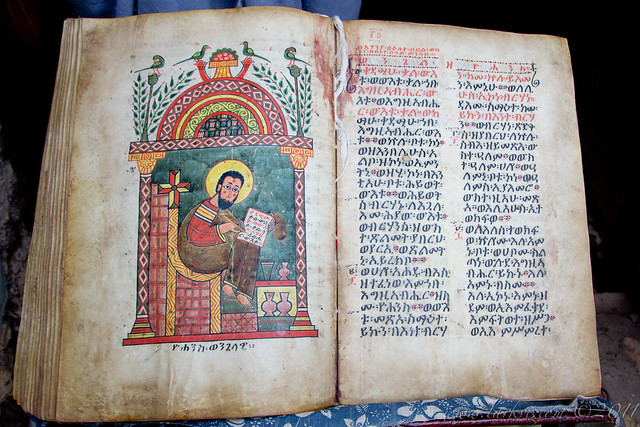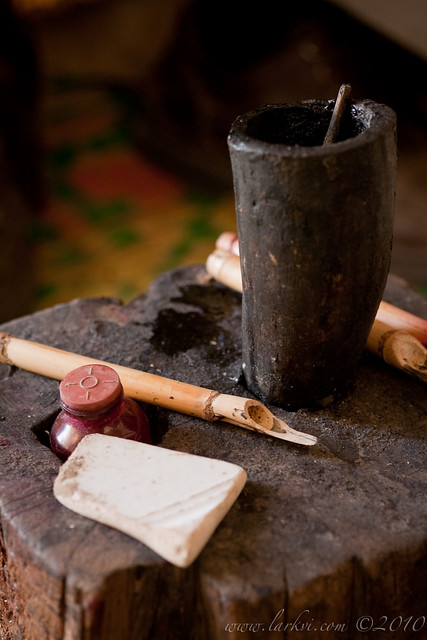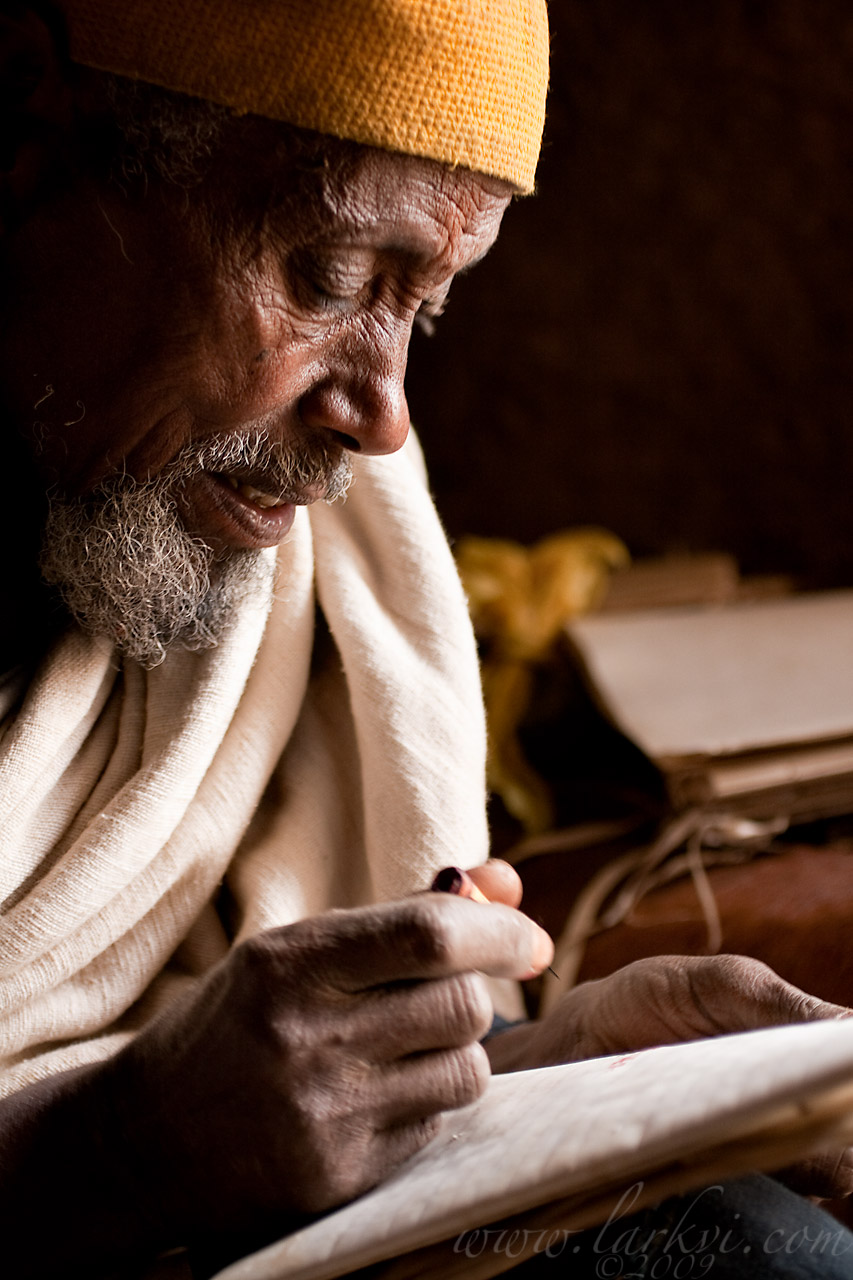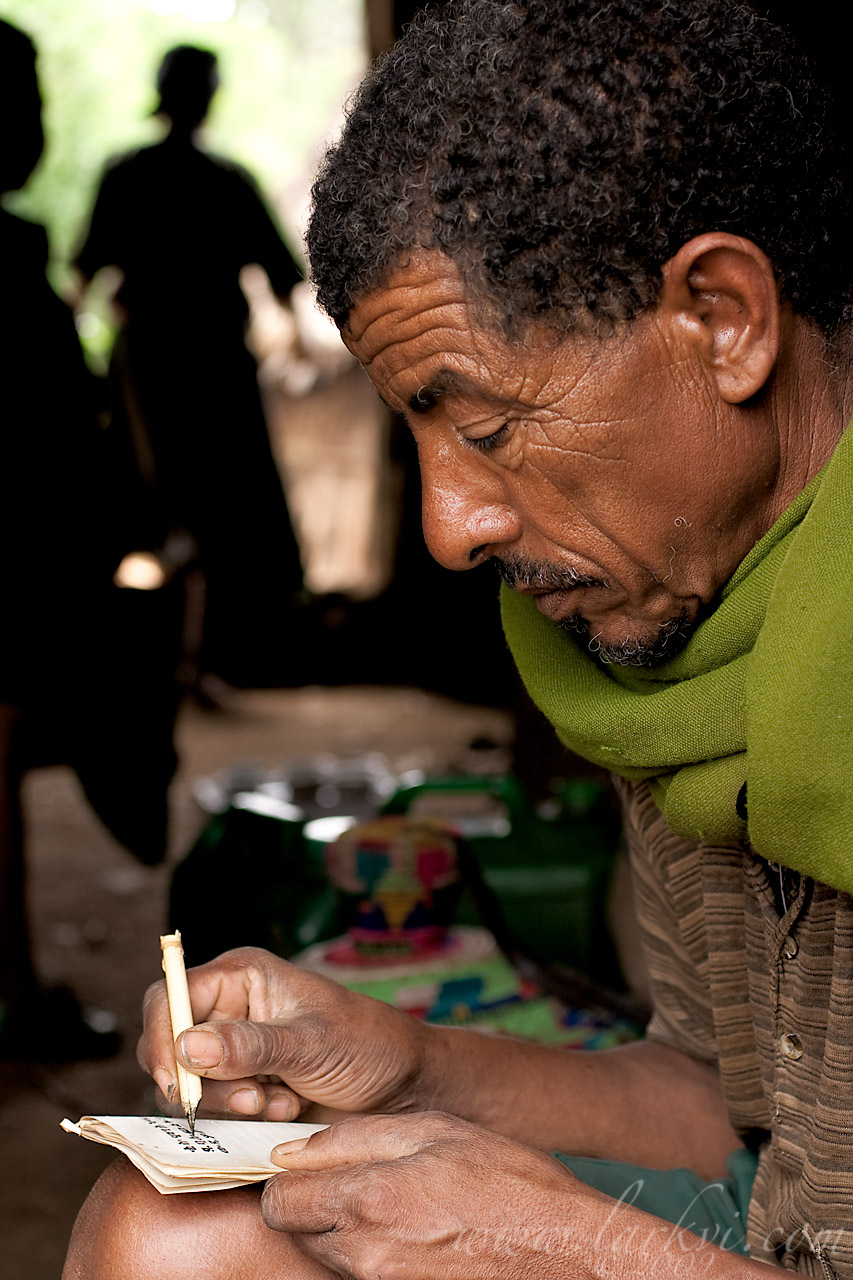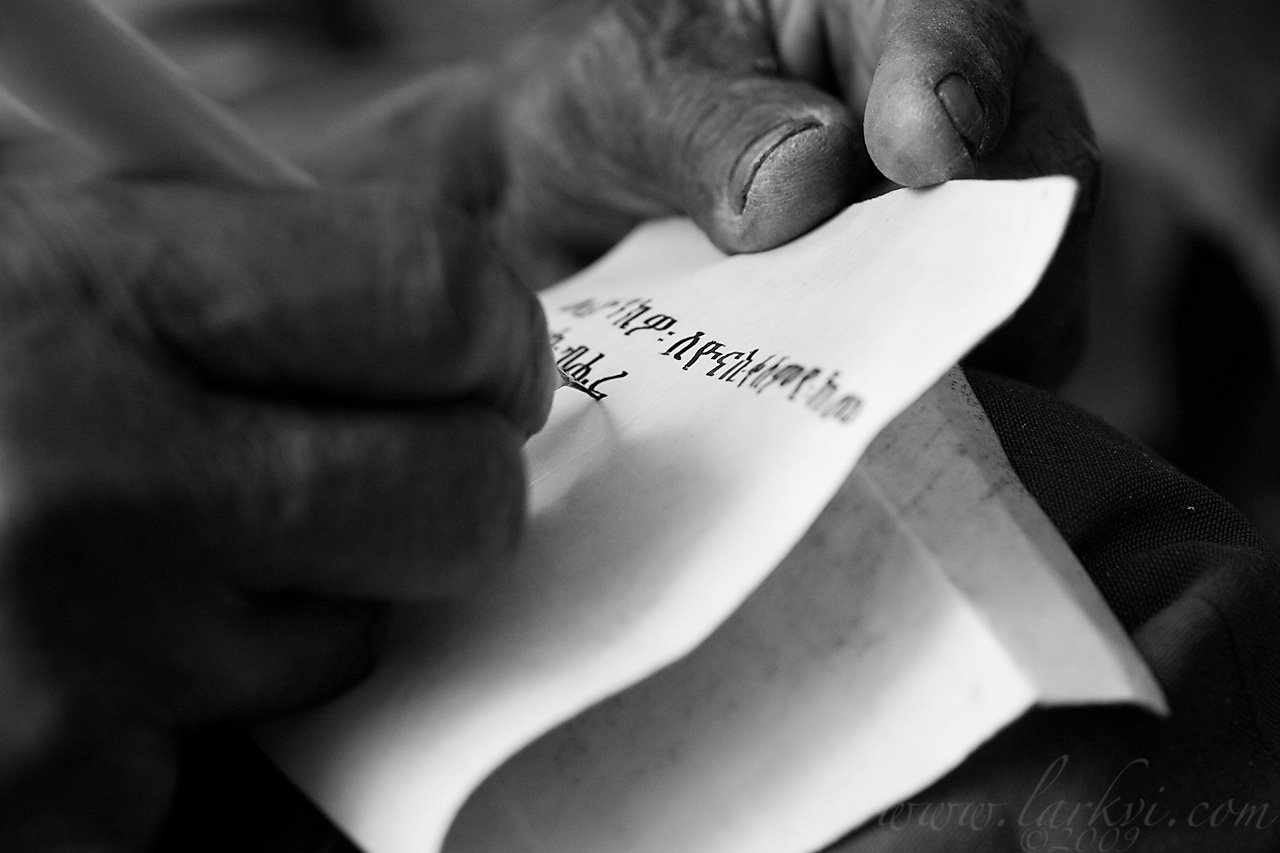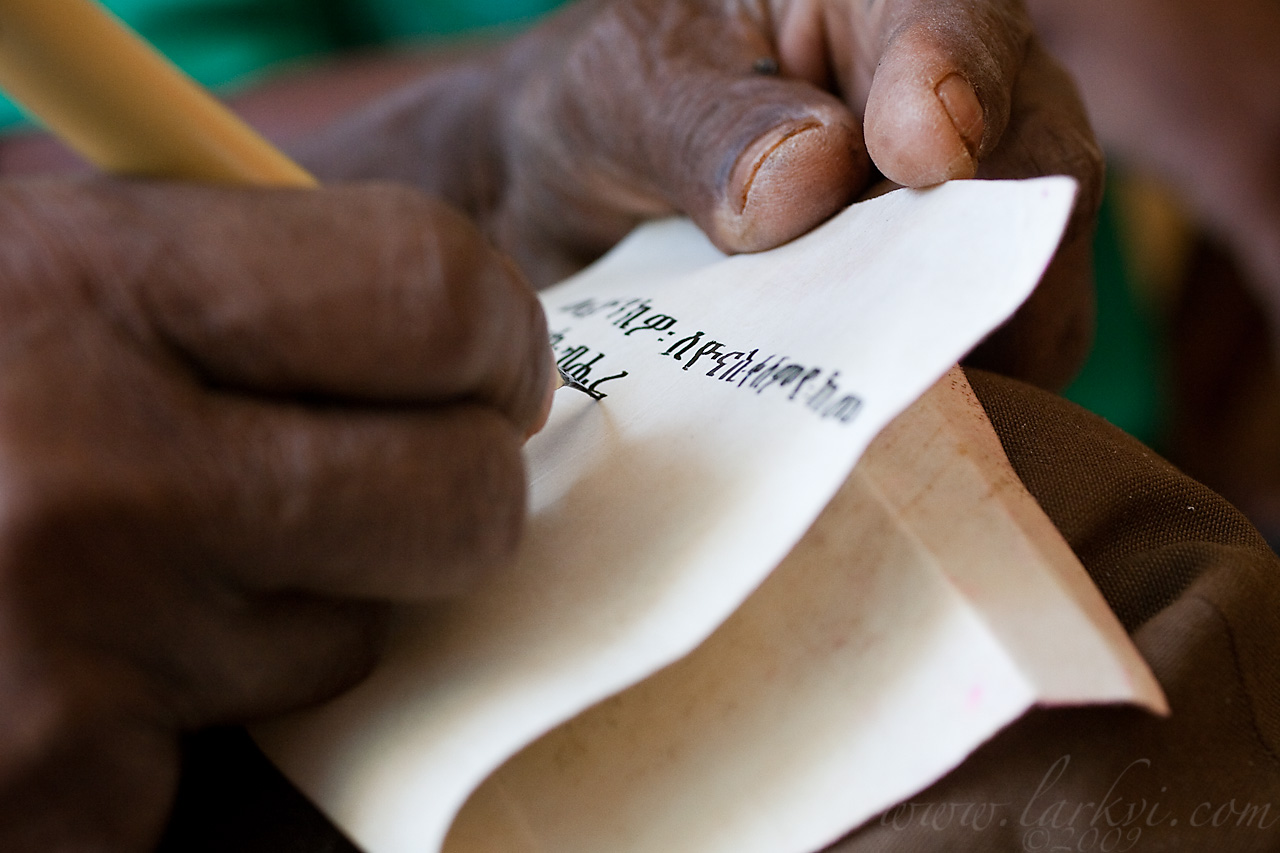The Evangelist portrait at the beginning of the Gospel of John, in the famous Kebran 1 Gospels, a notable example of manuscript arts held on the isle of Kebran in Lake Tana.
Tag: Pen
Scribal Tools, Adigrat, Tigray, Ethiopia, 2009
Kes Fente, Gälawdios, Amhara, Ethiopia, July 2009
Liqa Kahunat Ajugu, Gälawdios, Amhara, Ethiopia, July 2009
Kes Mogas, Gälawdios, Amhara, Ethiopia, July 2009
Kes Te’ubo, Lalibela, Lasta, Ethiopia June 2009
Kes Te’ubo is a local administrator and a scribe/illustrator in Lalibela. He makes wonderful, vivid colors out of powdered natural materials, mainly flower petals, roots, and leaves. Here, he is demonstrating his pen-cutting technique on a piece of native bamboo, known as ‘shamboko,’ which is the primary material used for traditional pens in Ethiopia (some other materials are mainly used for magical writing, and there is a tradition that quills were also used in the past.
Interviewing Te’ubo was interesting, as he was arrested on false charges between two of our meetings and thrown into the local lock-up. It was the first time I visited a jail in Ethiopia, though it was the temporary local jail, and not the prison proper. He was let out later that day, and the charges were apparently thrown out by the magistrate, but I briefly thought I would have to finish the interviews in prison.
Writing (B&W), Marigeta Haile Selassie, Mek’ele, Tigray, Ethiopia, March 2009
Writing, Marigeta Haile Selassie, Mek’ele, Tigray, Ethiopia, March 2009
I normally do not publish photos from my research work, but I have decided to try making them a little more artistic, and will attempt to get some good ones up here.
In this one, Marigeta* Haile Selassie, writing out a short phrase as a demonstration of pen-technique. Notice that he holds the pen at nearly a 90-degree angle from the page, a position dictated by the nearly-90-degree cut he made of the nib, with a slight angle to allow right-handed writing. He is working on his knee, sitting on a small stool in the corner of his shop, next to the window. The pen is made out of bamboo, two species of which are native to Ethiopia.
*The title, which basically translates as ‘Master,’ refers to having completed a certain level of traditional Church education–‘temhert’–the focus of which is the memorization of Church books. The level above it would be ‘Memhir,’ which means ‘traditional church teacher.’

